#vintage knitting booklet
Photo

Patterns for Corticelli Yarn, 1922
Once commercial yarn was invented and women were not spinning it themselves, yarn producers realized it made a lot of sense to feed the hunger for new patterns. You see here a page taken from a free publication which you will find at the Antique Pattern Library online.
Because of black and white movies, and the modern tendency for movie directors to make everyone wear sepia tones in historical stories, we often forget that the people of the past lived with just as much color as well do. You see here 1920s sweaters with some very playful coloring especially the lower right-hand picture. But all of them have some color play if only tipping. Notice that the waists are not well marked, and belts tended to fall lower and looser. This is in keeping with the tube silhouette which became so popular during the 1920s and made women try to flatten out all of their curves. Dropped collars were also popular in the 1910s and in the early 1920s.
For more free knitting and crochet patterns and dressmaking directions from the early 20th century and earlier, go here: www.AntiquePatternLibrary.com
#yarn#yarn companies#corticelli#corticelli yarns#antique pattern library#1920s fashion#1910s fashions#vintage knitting#vintage knitting patterns#vintage knitting booklet#free knitting patterns#1920s knits
57 notes
·
View notes
Photo

Body-ody-ody and some vintage leather buttons to match. 🕰️ (Pattern: Must Have Cardigan from @Patonsyarn booklet 500989 FF, Yarn: Malabrigo Rios “Bobby Blue”, vintage leather buttons from @MoodFabrics) 🕰️ You can hear all about this project, and all the others on The Knitmore Girls Podcast, available on all of your favorite audio platforms. 🕰️ #bipocknitters #knitting #BIPOCMaker #KnittersOfInstagram #BIPOCDyersOfInstagram #IndieDyersOfInstagram #KnitmoregirlsPodcast #KnitmoreALong #ProjectSweaterChest #handknit #couture #Bespoke #Malabrigo #Patons #MoodFabrics https://instagr.am/p/CuN8G4yR0EC/
17 notes
·
View notes
Text
FO: Vintage Dino Sweaters
They're done!!! A month late but complete none the less.

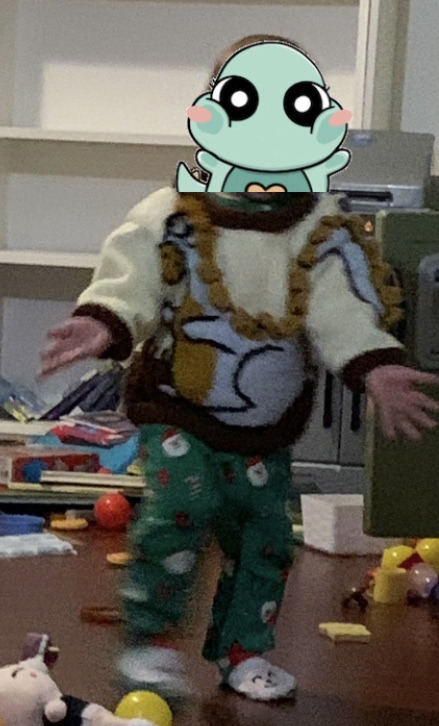
The pattern is Dino (Ravelry link) which was found in the Beehive Knit Menagerie booklet. It was released in 1987 and was a rather popular pattern for the time. My brother and a number of kids in my school had them.
This sweater became dear to my heart when, in college, my brother found a childhood picture of himself in the sweater and lamented that he didn't still have it to wear. So as an ever dutiful sister, I knit him an adult version.

Recently I was cleaning out my craft room and organizing after a renovation when my then 3 year old daughter found the booklet and started flipping through it. She saw the dino sweater and requested an orange and red dinosaur (her favourite colours) and I decided to also make her brother a matching one.
Details
Girl Sweater:
Size: 2
Yarns Used: Bernat Super Saver (cream, brown, black), Patons Canadiana (orange, red)
Modifications: Doubled the amount of spikes, accidentally altered the intarsia a bit because I apparently can't count. It passes the 10 foot/toddler rules so I left it.
Boy Sweater:
Size: 2, done on smaller needles for tighter gauge
Yarns Used: Bernat Super Saver (cream, brown, black), Patons Canadiana (orange), Berocco Vintage (blue)
Modifications: Knit on smaller needles and used a DK weight yarn for the dino body to assist with a smaller size. Added button flap at left shoulder and loop on collar for easier changing of a baby.
The smallest size on this is a 2, I already knew that I needed to size down for my 1 year old even if he is 'off the charts' for height, but when my size 3 for my 4 year old was massive, I made her a size 2 on regular needles. It's a sweater from the 80s, oversized was in, but this was a bit ridiculous.
I basically had to reknit the toddler sweater. Firstly, I messed up the intarsia even worse than it currently is, and didn't realize till half done the front. Then I realized the sizing issue after finishing the back (which I did in a size 2 by accident, only to realize it was a better fit). Then after I reknit the front, I had to do some surgery on the back as I decided to shorten the brown section and didn't want to pull out the full back.
After I started getting the spikes on, I realized I liked having them closer together and knit a bunch more.
I’ll take real clothes pictures the next time they wear them, but she wanted to put hers on as soon as she could and these turned out cute.
Overall this was a fun knit, and I'm very pleased with how they turned out. My daughter has already requested two other patterns from the booklet, but we'll have to see how she feels in the fall.
6 notes
·
View notes
Text
Start crafting on a budget
So you want to get into knitting/crochet or any number crafts and don’t know where to start? Or you’re on a budget and worried about spending a bunch of money on something you might not like?
There are a few places you can go to find discounted supplies. It will take just a little bit of work and dedication to get there. I’ve listed a few places to start below in order from what I think are cheapest to more expensive.
Local buy nothing groups
Hands down, the cheapest way but might take the longest. If you have a facebook profile (or make one specifically for the groups), asking a local for free and for sale or buy nothing can be a great place to get a start. Just remember to be polite and follow the group rules and it could lead to some good bargains. Because these groups are heavily dependent on you I can’t really recommend any good ones. Even in craft supplies don’t pop up in these groups my local free and for sale groups often help me find #2.
2. Yard sales/Estate Sales
Yard sales or Estate Sales can often be a treasure hunt, much like buy nothing groups. If I am looking for vintage materials or simply older craft supplies I will prioritize Estate Sales. This is because of an important distinction, estate sales generally happen after a death or a sudden move. Estate sales can have good deals but it’s important to remember this doesn’t always happen – some estate sale organizers will raise prices if something has a high resale value online. Generally I haven’t seen a big increase in yarn or already finished projects.
(One estate sale I went to even offered doilies and linens up by the bag.)
Yard sales can have a good selection but it’s important to know that this doesn’t always mean unused craft supplies. If you find one of these listings online, it would be a very good idea to check any photos listed or the description to see if you see supplies that might interest you. For some yard sales, you can try haggling, I am not sure on estate sales, but that might depend on who’s running it.
3. Second Hand stores
Second hand stores can include your local thrift stores and or chain thrift stores (ie Goodwill, Salvation Army ect). These stores will vary each week in what is offered, in person. Prices are generally good, it can depend on your location and who’s running it. I’ve found that the chain stores have raised their prices to be a bit more for yarn bags than they used to be but some mom and pop shops will give you bags for cheap.
Another option is to go the online second hand store route, like Ebay, Craigslist or shopgoodwill.com. Ebay can be good for lots of things and for more vintage patterns / old and out of date booklets. A lot of the things on these stores might not be brand new or fresh but might be a bit cheaper than starting fresh.
4. Dollar Store
Now, if you have a Dollar Store near you there is a good chance they’ll have a decent starter selection of yarn and knitting needles and crochet hooks. There are a few different types of yarn and because each ball is $1.25. I wouldn’t recommend this for the long term for at least normal acrylic because it’s a bit more expensive to shop the Dollar Tree than the sale section of a box store.
The needles and hooks are pretty limited in sizes so I highly recommend looking at a second hand shop for those.
5. Sale section of your local big box store
The sale section of an online retailer or big box store is another great place to look for discount craft supplies. The yarn selection can be great and the coupons can be used for other notions. I personally like Joann's or Michael's for big box stores but for online retailers I like knit picks. Your local yarn store (if you have one near you), is also a great place to get help or find other crafters. Some even carry budget friendly yarns. (I personally like Berroco as a budget yarn!)
#knitting#crochet#fiber arts#resources#budget friendly#dollar store#estate sales#yard sales#knitblr#crochetblr
24 notes
·
View notes
Link
Check out this listing I just added to my Poshmark closet: Vintage Baby Booties.
0 notes
Link
Check out this listing I just added to my Poshmark closet: VTG Hats Mittens Socks Crochet craft pattern.
0 notes
Text
at the moment I am focusing on doing a lot of material tests, making illustrations using text, found materials (from around the home space), certain pigments in combination, fabrics, wax etc.
my rules for all my mediums chosen are strict, if if is fabric it must be second hand, discarded, if pre-woven cloth (found knitting) it is about the act of using these to make something knew when they have been half-used i.e. sourced from a charity shop but not made into anything, I have been using the peels and body's of fruits, nuts and plant matter from various sources a. the garden, the neighbours garden, b. gifted from friends grown on their property c. from my grandparents garden from up north
pigments have been selected as follows; tacky oil pigments that are seconds or old from Geoffs emporium (low quality), powdered textile dye, hand-soap as a gesso, found pens from around the home.
paper, has been sourced from second hand tax sheets, or newsprint. or small second hand booklets that are made for small lists or personal/private notes.
materials, also can be sacred, like the kauri gum and wood piece from fallen pieces of gum and wood below the kauri tree in the local mt Cecilia park. or clementine skin from fruits peeled from the neighbours tree, beads from vintage bracelets that have already led a big-life. old English porcelain bowls that is crazed and stained to be used for making beads sourced from my job at the op shop that was cheap or to be discarded because of damage
soap and tin foil from the home in the bottom drawer.
wool and silk carefully chosen for feel and texture,
the hierarchy and collectedness of these various materials bring up a cabinet of curiosities or a wonderment of daily and found items. all sources must originate from around the home-space, the domestic, homely
0 notes
Photo

The latest addition to my #etsy shop: Baby Toddler and Teenage Dolls Fashion Knit Patons F262 Knitting PATTERN Booklet Vintage Crochet Knitting Pattern FREE Mailing To Canada USA #crochet #knitting #pattern #knit #vintage #patterns #dollfashions #crochetandknit #12pattern https://etsy.me/3Er9Sxi https://www.instagram.com/p/Ck6oHKgSwCK/?igshid=NGJjMDIxMWI=
0 notes
Photo

Knitted and Crocheted Boutique - Star Book no. 226
Year: 1970
#knitting#crochet#1970s#1970s fashion#vintage fashion#type: booklet#year: 1970s#craft: knitting#craft: crochet#origin: USA
5 notes
·
View notes
Note
deacon knitting viago a new plushie every time he cries bc his actual one got too many holes (bc he uses it to bite)!! 🧸💞

Oh my goodnesssss😭 Viago probably goes running to Deacon in tears as he holds out the bitten plushie with clumps of stuffing and frayed wool basically being the only thing holding it together (bc/ tiny Viago tends to bite quite heavily while sleeping, rip his stuffies)
Deacon will try to patch up the plush at first just so he's have time to start on a new wool friend for Viago ;w;
And it's probably patterns from vintage booklets so the knitted plushies look like this


And, the plush that is bitten beyond repair all get their own funeral services (which is really just, adding them to the shoebox of past plushies that are being used as scrap materials xD)

14 notes
·
View notes
Text



So I've been actively collecting vintage knitting books for 4 years now and something I've noticed is the patterns with little notes next to them always tend to be patterns for men, children, and babies.
I think that there's something really poignant about finding evidence of people making things for their loved ones.
This booklet arrived in the post yesterday and dates from 1937, the only pattern marked out is for the mens pullover, the notes say "pins 13 & 11" (a size smaller than the pattern suggests) and a tally of the decreases for the armholes.
#knitting#vintage knitting#1930s#also check out the cover jumper including a zip which were still a novelty then
4 notes
·
View notes
Photo
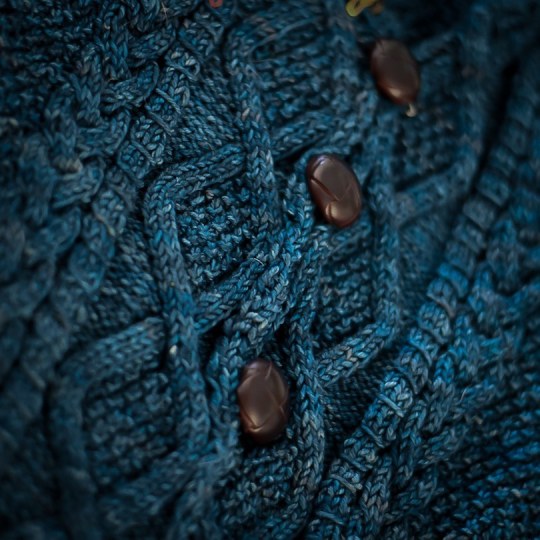
Body-ody-ody and some vintage leather buttons to match. 🕰️ (Pattern: Must Have Cardigan from @Patonsyarn booklet 500989 FF, Yarn: Malabrigo Rios “Bobby Blue”, vintage leather buttons from @MoodFabrics) 🕰️ You can hear all about this project, and all the others on The Knitmore Girls Podcast, available on all of your favorite audio platforms. 🕰️ #bipocknitters #knitting #BIPOCMaker #KnittersOfInstagram #BIPOCDyersOfInstagram #IndieDyersOfInstagram #KnitmoregirlsPodcast #KnitmoreALong #ProjectSweaterChest #handknit #couture #Bespoke #Malabrigo #Patons #MoodFabrics — view on Instagram https://ift.tt/XkxNwMR
0 notes
Text
FO: Vintage Dinosaur Sweaters
They’re done!!! A month late but complete none the less.
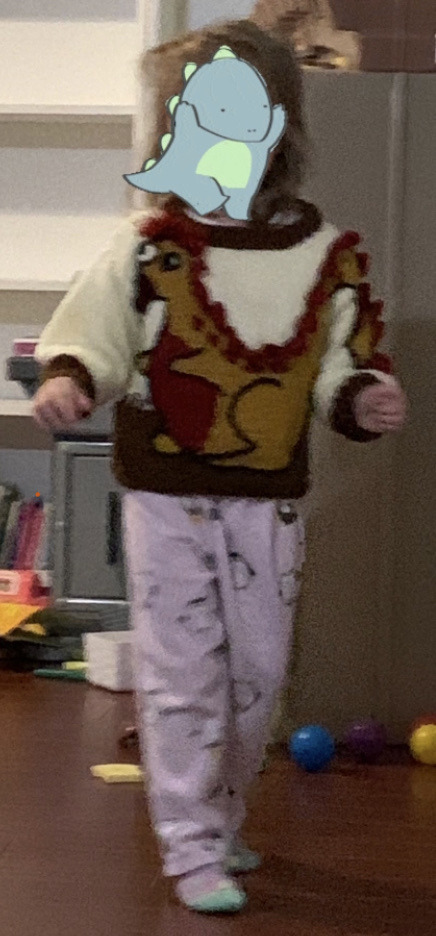
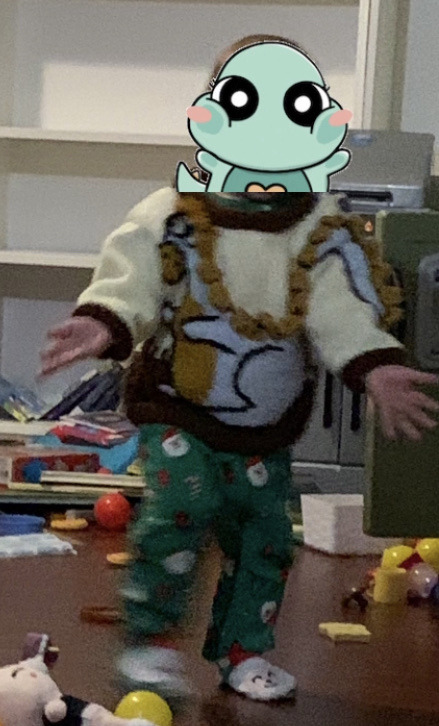
The pattern is Dino (Ravelry link) which was found in the Beehive Knit Menagerie booklet. It was released in 1987 and was a rather popular pattern for the time. My brother and a number of kids in my school had them.
This sweater became dear to my heart when in college, my brother found a childhood picture of himself in the sweater and lamented that he didn’t still have it to wear. So as an ever dutiful sister, I knit him an adult version.
Recently I was cleaning out my craft room and organizing after a renovation when my then 3 year old daughter found the booklet and started flipping through it. She saw the Dino sweater and requested her own orange and red dinosaur (her favourite colours) and I decided to make her brother a matching one.
Details:
Girl sweater:
Size: 2
Yarns used: Bernat Super Saver (cream, brown, black), Patons Canadiana (orange, red)
Modifications: none intentionally, the dinosaur’s belly is a bit bigger because I miss counted the stitches, it passes the 10 foot/toddler rule so I left it.
Boy Sweater:
Size: 2, done on smaller needles to fit him
Yarns used: Bernat Super Saver (cream, brown, black), Patons Canadiana (orange), Berocco Vintage (blue)
Modifications: knit on smaller needles for smaller gauge, used DK weight yarn for Dino body to assist with smaller size, added button flap at the left shoulder and loop at collar for easier changing.
The smallest size on this is a 2. I already intended to size down the needle for the baby, but when checking gauge and finished measurements I realized the size 3 I originally cast on for the toddler was going to be way too wide for her small frame. It’s a sweater from the 80s, oversized was in.
I basically had to reknit the toddler sweater twice due to the sizing issues. I ended up doing some knitting surgery on the back where the brown meets the cream as I shortened that when I reknit the front.
I also doubled the amount of spikes on the dragons’ backs because I thought it looked better with more.
Overall this was once again a fun knit with good practice for intarsia and duplicate stitching.
My daughter has already requested two other sweaters found in that booklet, but we‘ll have to wait and see how things turn out for the near future.
0 notes
Text





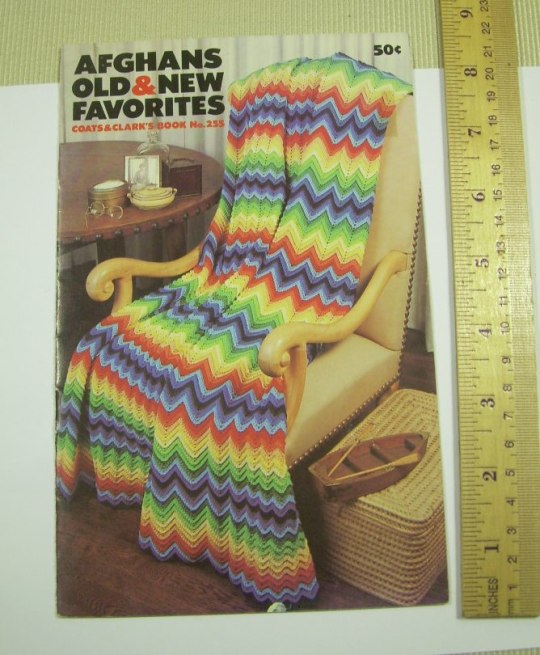


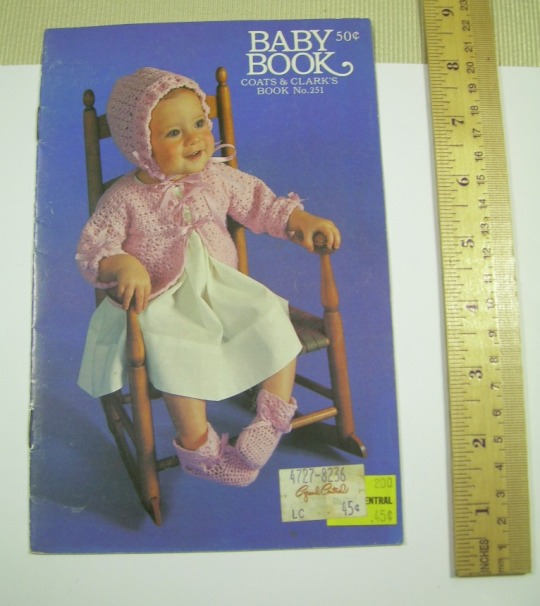

Booklets FOR SALE - 8 VINTAGE Retro Classic 1970s CROCHET + Knit PATTERNS Blankets Hats scarves + Home Goods https://www.ebay.com/itm/265496347639
-- 8 vintage booklets in very good condition, on yarn arts and crafts to make yourself, with patterns, illustrations and complete instructions for you to work with.
1. Instant Crochet by Needlecraft Institute; Crochet today, wear tomorrow. 1971; 126 pages. Stitching guide and stitch patterns to make your own creations. Like a stitch dictionary, with some simple clothing guides at the end.
2. Star Book No. 226, Knitted and Crocheted Boutique by American Thread, 1960s / 1970s, with model Cybill Shepherd, and other famous faces from that era. 24 pages.
3. Coats & Clark Book No. 176, Old and New Favorites. 36 pages. Has a few corners folded down. Clothing and home goods.
4. Coats & Clark Book No. 223, Creative Afghans, hairpin Lace, crochet and knit, 16 pages. Designs for blankets and throws.
5. Coats & Clark Book No. 255, Afghans Old & New Favorites, 16 pages, lovely blankets, cable style, and fun to make.
6. Coats & Clark Book No. 251, Baby Book, 16 pages, wonderful and joyous things to make for baby and gifts.
7. Coats & Clark Book No. 238, Afghans, 16 pages, another collection of beautiful blankets and shawls to create and enjoy.
8. Coats & Clark Book No. 170-B, Learn How Book, Crochet, Knitting, Tatting, Embroidery, 68 pages. A plethora of various stitching, knitting and crochet stitch patterns and how to DIY. With the patterns to make for both apparel and home goods at the end.
#crochet#knitting#artsandcrafts#makers#retro#1970s#style#yarn#Stitches#patterns#apparel#hats#scarves#babyclothes#fun#trends#crafts#gifts#make#DIY#bookseller#reader#collectible#ephemeral#collector#book finders#rare books#book buyers#book shop#read
2 notes
·
View notes
Link
Check out this listing I just added to my Poshmark closet: Vintage Baby Booties.
0 notes
Photo
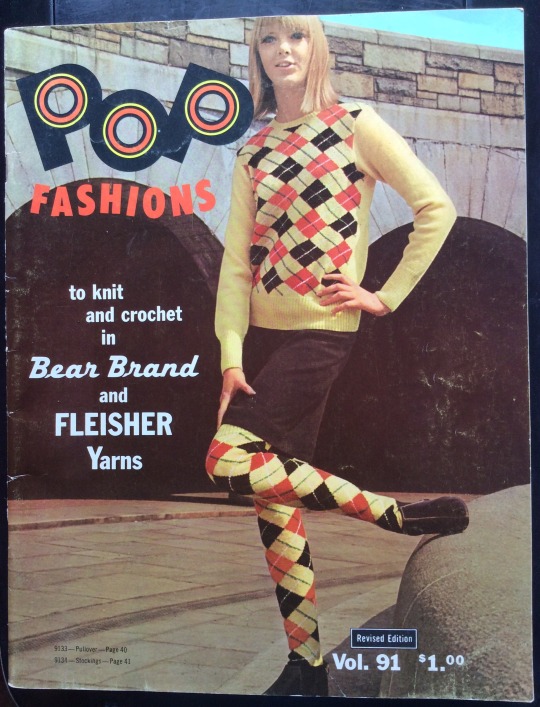
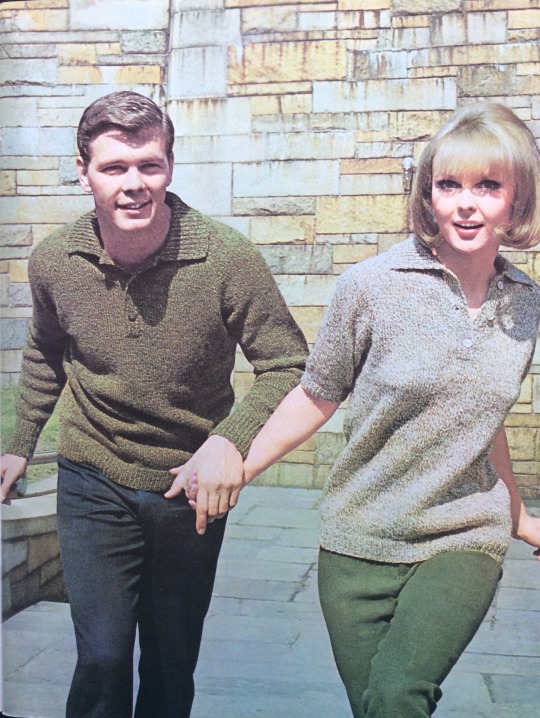


New and Old Collide in 1965: Pop Fashions to Knit and Crochet
As the fall fashions are upon us, I have been perusing some of the vintage knitting books in my collection. Like the makers of sewing patterns, the yarn companies made a point of keeping up with the latest style trends. So anything “pop,” as in popular with young people, was adopted and sold during the cultural Youth Quake of the 1960s. Yet not everyone wanted to be wearing the newest trends, and knitters may have been specially wary of choosing a fad which would be out of style soon. To spend that much time making something and have it become last month’s fashion would be too painful. The result is a weird combination of the new and the old in the booklet.
On the cover you see a traditional fabric pattern, the argyle, but it is done up in a bright yellow and paired with matching stockings. Notice the odd uncomfortable, almost inexplicable pose of the model. The idea was to get away from the stiffness of traditional fashion photography by adding movement and action. Which is pretty hard when moving people create blurry photos. You see a similar attempt to create movement by the models with the matching sweaters on the young man and young woman. Although the look is unisex and they are both wearing pants, the buttons on the sweaters still follow the conventions with right over left on her and left over right on him.
While stockings were a way to cope with the modesty problems raised by the hemlines of miniskirts, knee socks were another fashion trend. The ribbed blue and green sweaters came with directions for making the socks as well and you see them worn with miniskirt or shorts. This looks strangely childish as only kids wore knee socks in the early 20th Century, the weird erotic little girl look was one of the unfortunate trends for grown women in the 1960s.
Still tradition remained. Along with the these new, bright looks were the cardigans and pullovers for everyday sportswear, for tennis, for skiing, for schoolwear. So both the teenage who hankered for a top made out of bright, crocheted granny squares and her mother who thought she really should have a classic blue cardigan could find satisfaction.
#knitting#vintage knitting#vintage fashion#1960s fashion#Youth Culture#youth quake#knit clothing#vintage knitting patterns#bear brand and fleisher yarns#pop fashions#costume history#dress history#fashion history#makers#making#diy projects#diy#cardigans#pullovers#granny squares#crochet#crochet patterns#vintage crochet patterns
28 notes
·
View notes